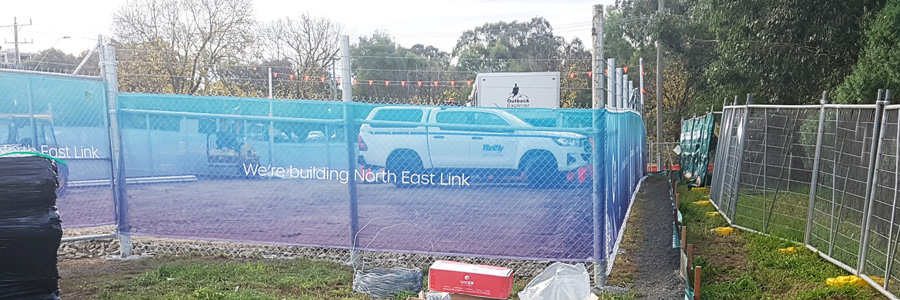Avoid EPA Fines with effective sediment control

Stormwater drains are for rain water only, so it’s important to manage any pollutants from your construction site with effective sediment control tools. These tips from the NSW Department of Land and Water Conservation will help you keep your site compliant and reduce the environmental impact of your project.
Why should you care about stormwater pollution?
You probably know that it’s illegal to let run off from building sites and construction zones enter stormwater drains. Managing silt and debris on site is critical if you don’t want to cop a hefty fine. Polluting stormwater is an offence that can result in on-the-spot fines or legal proceedings.
Although a single construction site might seem insignificant, if you consider all the building sites in the region, erosion has a huge effect on water quality. Studies by the EPA show that one building site can lose up to four truckloads of soil in a single storm!
Any type of building or construction can disturb the soil, creating dust and debris. Run-off from a building site travels down gutters and drains to creeks, canals and waterways, eventually ending up in our rivers and oceans. Sediment is one of the biggest environmental risks on your site, with small particles from soil erosion, concreting by-products, sawdust and fine gravel easily washed into drains.
A properly installed sediment fence goes a long way to reducing the risk of stormwater pollution around your site.
How to Install Silt Fencing
The most efficient and widely accepted sediment barrier for construction sites is a geotextile sediment fence. Sediment fences act like a dam, trapping the sediment whilst still allowing water to leave the site. They are effective in retaining most silt, are inexpensive, and are very easy to construct.
When installing a sediment fence, keep these top tips in mind:
- Sediment fence is not designed to filter concentrated flows and therefore needs to be placed following the site’s contours where possible.
- Your fence requires regular maintenance and checks. As work on the site progresses, the shape and contours of the site change, so keep an eye on any areas that might be affected as work progresses.
- The performance of a sediment fence diminishes considerably when crushed by delivery of building materials. It must remain vertical and keyed into the soil.
- Where the sediment fence is not installed correctly, water will inevitably flow through the point of least resistance. Damaged fences should be repaired promptly.
- Sediment fences need to be trenched in at least 150 mm and buried so the water flows through them, not underneath. Always use a trench and wooden stakes to support the geotextile fabric so that it can function effectively.
- It’s best to compact the soil on both sides of the fence to avoid seepage under the barrier. It should naturally be situated on the low sides of the site to follow the flow of water, and should be shaped to include uphill returns at either end to prevent sediment flowing around it.
Other pollution controls
A range of different GEOmasta products can help to prevent erosion of exposed soil, prevent and filter entry of sediment into stormwater channels, and contain and absorb spills and wastewater. These include sand bags, silt bags, dewatering products, sediment traps and silt socks.
Buy silt fence online
For expert advice contact the GEOmasta team at Jaybro.
 Sign In
Sign In 

